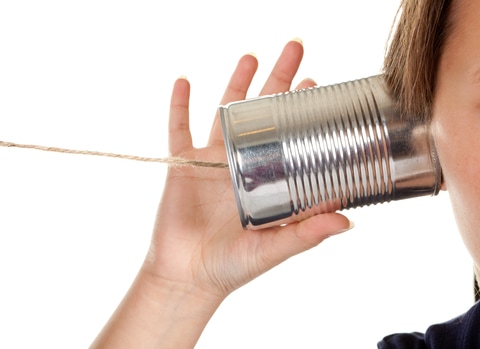|
I’ve got a meeting coming up, with friends, trying to shape the community we live in. I want this meeting to go well, to have everyone feel valued and to create something together that everyone feels a part of. To me the process is as important as the end result. I wrote this blog whilst thinking about that process. First of all what is healthy discussion? I think this is: “A discussion which results in connection - where all parties feel heard and respected and which is limited to a specific topic. Where it feels natural and enjoyable to give and receive, rather than playing the game ‘who’s right and who’s wrong?” So how can I, as an individual, or we, as a group, engage healthy discussion? Think about your intentions“You can either practice being right or practice being kind.” (Anne Lamott) Your intention will affect the outcome. So firstly it is important that you understand what you really want and why. Why do we bother to talk at all? Whenever we take time and energy to open our mouths and talk we are expressing ourselves for a reason. That could be: For the love it - expressing what is in our heart at that moment, with no other motive. This is a way of saying ‘thank you’ through celebrating. (This includes saying YES as much as saying NO) We want or need something. We have an ‘unmet need’ and we seek to request, ask or demand. (This includes asking for forgiveness, feedback, love, learning, attention, space… not just material ‘things’.) Hint: Demanding doesn’t work so well, in the long run. When you force someone to do something you both pay. So it helps to, individually, set and intention, before you do into debate. Investigate why you are having this discussion. Is there something you want to request - what is is specifically and why. This helps determine your own motives, which we often ‘think’ we know, but when we take a moment and investigate them we realise some ‘fears’ behind them. So coming into a debate and expressing your fears can lead to better cooperation too. Finally - what could be the best outcome- positive focus! - what can you seek to celebrate (appreciate) and learn from the discussion? So in summary:
I think most of us want: to make life more wonderful, for ourselves and for each other, including wider society and future generations. However, we must also recognise that we are in a particular stage of our life and both fear and ego are always present, even in small amounts. You are a complex individual with many facets. Where are those various facets within this developmental path? We all move through these phases at our own pace and we may experience different parts of our life moving at different paces, for example perhaps our professional life has reached a maturity of serving others whereas their sexual expression is still in the exploring stage. One cannot force someone who is focused on ego to start becoming more focused on serving. They require the time they need to explore and express themselves before they understand that serving others is important. My belief is that in a healthy society change cannot be forced, but only inspired. A peaceful world takes patience, listening, awareness, accepting and allowing. Create a good listening and thinking environment (10 components) “Peace cannot be kept by force; it can only be achieved by understanding.” ~ Albert Einstein I’ve been reading a great book by Nancy Klein, entitled ‘Time to Think’. The basic premisis is that the quality of life is determined by the quality of our thinking and the quality of our and others thinking is determined by the quality of our listening! This is borrowed from http://www.timetothink.com/ - So imagine if we took that on board in our communication: “The quality of one’s attention determines the quality of the other’s thinking” 1. ATTENTION - Attention is an act of creation. Attention, driven by deep respect and genuine interest, and without interruption, is the key to a Thinking Environment. Attention is that powerful. It generates thinking. It is an act of creation. The main tool I use here is FULL BODY LISTENING - without reaction, and giving lotsof time and space, even sometimes in silence, until someone is truly finished speaking. This often requires structuring ahead of discussion, and could even involve a ‘talking stick’ to ensure one person speaks at a time...so that we get... 2. EQUALITY - Even in a hierarchy people can be equal as thinkers Imagine a place where everyone is valued. Everyone gets a turn to think out loud and a turn to give attention. To know you will get your turn to speak makes your attention more genuine and relaxed. It also makes your speaking more succinct. Equality keeps the talkative people from silencing the quiet ones. But it also requires the quiet ones to contribute their own thinking. The result is high quality ideas and decisions. 3. EASE - Ease creates; urgency destroys. Ease is an internal state free from rush or urgency, creates the best conditions for thinking. But Ease, particularly in organisations and through the 'push' aspect of social networking, is being systematically bred out of our lives. We need to face the fact that if we want people to think well under impossible deadlines and inside the injunctions of ‘faster, better, cheaper, more,' we must cultivate internal ease. This takes the particular discipline of a Thinking Environment, and it takes a preference for quality over the rush of adrenaline. 4. APPRECIATION - The human mind works best in the presence of appreciation. Society teaches us that to be appreciative is to be naïve, whereas to be critical is to be astute. And so, in discussions we are asked to focus first, and sometimes only, on the things that are not working. The consequence is that our thinking is often specious.Thinking Environment expertise generates a balanced ratio of appreciation to challenge so that individuals and groups can think at their best. 5. ENCOURAGEMENT - To be 'better than' is not necessarily to be 'good' Competition between people ensures only one thing: if you win, you will have done a better job than the other person did. That does not mean, however, that you will have done anything good. To compete does not ensure certain excellence. It merely ensures comparative success. Competition between thinkers is especially dangerous. It keeps their attention on each other as rivals, not on the huge potential for each to think courageously for themselves. A Thinking Environment prevents internal competition among colleagues, replacing it with a wholehearted, unthreatened search for good ideas. 6. FEELINGS and NEEDS - Repressed or unexpressed feelings can inhibit good thinking Thinking stops when we are upset. But if we express feelings just enough, thinking re-starts. Unfortunately, we have this backwards in our society. We think that when feelings start, thinking stops. When we assume this, we interfere with exactly the process that helps a person to think clearly again. If instead, when people show signs of feelings, we relax and welcome them, good thinking will resume. 7. INFORMATION - Withholding or denying information results in intellectual vandalism. Facing what you have been denying leads to better thinking. We base our decisions on information, accurate or not, all of the time. When the information is incorrect, the quality of our decisions suffers. Starting with accurate information is essential, therefore, if good independent thinking is our aim. The importance of information also pertains to the pernicious phenomenon of denial, the assumption that what is happening is not happening. Learning how to formulate questions that dismantle denial is a powerful feature of Thinking Environment expertise. 8. DIVERSITY - The greater the diversity of the group, and the greater the welcoming of diverse points of view, the greater the chance of accurate, cutting-edge thinking. Reality is diverse. Therefore, to think well we need to be in as real, as diverse, a setting as possible. We need to be surrounded by people from many identity groups, and we need to know that there will be no reprisal for thinking differently from the rest of the group. The ‘Diversity Session’, a series of questions that best reveals and strengthens the diversity of a group, is the basis of another important programme producing Thinking Environment expertise. 9. INCISIVE QUESTIONING - A wellspring of good ideas lies just beneath an untrue limiting assumption An Incisive Question will remove it, freeing the mind to think afresh. Everything human beings do is driven by assumptions. We need to become aware of them, and by asking Incisive Questions, replace the untrue limiting ones with true, liberating ones. The building of Incisive Questions is at the very heart of generating fine independent thinking. These questions have been described as ‘a tool of unbelievable precision and power’. 10. PLACE - When the physical environment affirms our importance, we think more clearly and boldly. When our bodies are cared for and respected, our thinking improves. We have found consistently that Thinking Environments are places that say back to people, ‘You matter.’ People think better when they can arrive and notice that the place reflects their value - to the people there and to the event. A good sense of place is a silent form of appreciation. Use skilful language and thoughts What language can we use to instead connect with them on a human level and try not to judge, but instead to listen, understand and work together to get our individual and collective needs met?
DISCONNECTION - WHY IT HAPPENS (Four D's of Disconnection) 1. Diagnosis (judgment, analysis, criticism, comparison) Blame, insults, put-downs (critical remark), labels, criticism, comparisons, and diagnoses are all forms of judgment.When we judge, as a result, we increase defensiveness and resistance from others. If they do agree to act in harmony with our values because they concur with our analysis of their wrongness, they will likely do so out of fear, guilt, or shame. eg: “The problem with you is that you’re too selfish.” “It is wrong / It's not okay” “If you don’t help me I won’t lend it to you.” (demand with punishment) “If you don’t help it will reflect badly on you.” (demand with blame) “Why can’t you be like your brother?” (comparison) “You are so stupid.” (labeling and insult) “You are so intelligent.” (positive labeling) 2. Denial of Responsibility We are each responsible for our own thoughts, feelings, and actions. The phrase “You make me feel guilty” is an example of how language facilitates the denial of personal responsibility for our own feelings and thoughts. Eg: “I cleaned my room because I had to / was told to.” – impersonal forces/ authority. “I drink because I am alcoholic. So was my dad” – diagnosis or psychological history. “I hit my child because he ran into the street.” – action of others. "I have to because I'm a father and that's what father's do" - cultural rules and regulations 3. Demand A demand explicitly or implicitly threatens listeners with blame or punishment if they fail to comply. It is a common form of communication in our culture, especially among those who hold position of authority. Eg. “You have to do that” 4. ‘Deserve' oriented language Life-alienating communication is also associated with the concept that certain actions merit reward while others merit punishment. eg: “He deserves to be punished.” Most of this blog is interpreted from the teachings of Marshall Rosenberg and his model of compassionate (or nonviolent) communication (NVC), for which there is a simple and accessible book and youtube explanation, which should be observed in full to understand the background. I have simply created these tools to provide an accessible means into the work: But here are my 10 things I try to do, which help me: 1. Remember that a decent conversation requires a bit more time If we want to have a quality of connection that goes beyond simply venting our demands and problems onto someone else we need time and space to listen, think about what was said and try to understand each other. The aim of conversation isn’t always to find a quick solution, or a solution at all, but be heard and to see and hear what is going on for someone else - with an end result of feeling connected. 2. Ask before giving feedback People don’t usually like unsolicited feedback. It can seem patronizing, arrogant or condescending. It will probably be unwelcome and may result in the opposite of the change we wanted to request. Asking could look like:
3. Own choices Our language is our choice and we often use a language of ‘no choice’ or ‘duty’ eg:
4. Use ‘I’ statements or ‘My experience is…’ without judgements, evaluations, diagnosis or blame. Own the experience and choice. In doing this we must be careful to separate our experience and the situation, otherwise we assume the cause and effect:
5. Start a conversation with your explicit intention. Eg. “I would like to talk to you in a healthy way, without blame or criticism so that we can both feel heard and respected. I want to know what is alive in you” or
6. It’s okay to express how you feel and what you want to request. You can also start a conversation with an 'emotional caveat', if needed. An emotional caveat is simply to add how your feeling. This prepares the other person so that they can respond sensitively to that. For example:
The NVC school of thought is that we create a semi-scripted response which includes a feeling (I feel annoyed when I hear...) an underlying need (I need respect) and a request to try and meet that need (could you please give me time to…). But in my experience this is slow and difficult - but it is very useful to be able to express a feeling as a first step to self-empathy and then to let the rest take care of itself. The essence here is to be willing to feel and see others sharing feelings, without taking it personally. 7. Use a criticism sandwich as a default. If there is even a glimmer of something you liked or agreed with start with that because it will help ‘open’ the ears and heart of the other person and of yourself. Ending with a like is less important, but a small appreciation here will go a long way, especially if you can connect and express a resulting positive feeling. Eg: “I like the way you said XXX and (insert body of discussion)... Thank you for taking the time to investigate and express your concern - I feel protected and happier. 8. Use reflective listening and Embrace silence Before you retort try repeating back what you ‘heard’. Often this is different than what the speaker meant you to hear and there is an opportunity for misunderstandings to be ironed out before going forward. Start this with “What I heard you say is…” Awkward moments are useful - they are often times when we are ‘thinking’. So let these moments last a bit longer. Ask the speaker if they have nothing more they have to say and wait until they have definitely finished. 9. When triggered take a moment It can be helpful to investigate, internally, what you are afraid of, angry at or sad about. Try and find the corresponding need and then express those two things, with a reflection of what you heard. If this isn’t being heard and emotions are being inflamed take a moment to accept your own feeling and see if you can find space to listen fully, in silence. Reflect what you hear, without judgement when you feel able. 10. Be aware of derailed discussion At any point reiterate your intention and steer the conversation back on course. The best way to do this is with a decisive question, eg. Is this what we came here to speak about? Is this relevant and can we discuss this another time? Is there time to talk about this now? That's it! I know there is a lot, but you know what, we are complex, and the relationships we have are complex, so it is worth spending some time working them out. We need connection - clear connection, rather than crossed wires and misunderstanding, which is where most suffering emerges from. So this is your chance to influence that. x
0 Comments
Leave a Reply. |
AuthorsNeil Morbey is a meditation teacher, group facilitator and inspiration guide for Positively-Mindful.com Blog Index
Archives
May 2024
|





 RSS Feed
RSS Feed